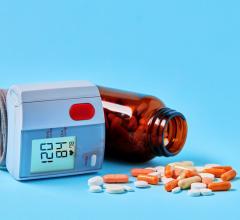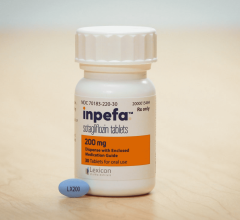
Medication errors can occur at any point during the medication delivery process from prescribing to dispensing; however, one of the most common types of medication error stems from incorrectly programming IV pumps.
Dose error reduction systems, which contain a hospital-specific drug library and predetermined dose limits, are intended to control the amount of intravenous drug delivered to prevent inadvertent underdosing or overdosing. When an infusion is programmed that falls outside the predetermined dose limits, an alarm sounds, prompting the clinician to re-program the infusion within safe limits. Other types of smart pump technology include wireless data transfer and bar-code scanners to identify the contents of drug containers. Dose error reduction systems have been on the market for several years and are considered a fairly mature technology, says Erin Sparnon, senior project engineer, Health Devices Group, ECRI Institute.
“Dose error reduction systems have produced very good results and appear to be implementable and user friendly, especially when supported by wireless data communication — an important factor in effectively and practically maintaining drug libraries and using log-analysis software,” Sparnon explained.
But why then — even with the use of smart pumps — are IV medication errors still occurring?
The Human Factor
Smart pumps, like many programmable devices, only live up to their potential when implemented correctly and closely monitored.
According to Sparnon, the efficacy of smart pumps relies upon both the facility and the supplier. The pumps can only reduce medication errors if:
1. They contain a drug library that matches actual clinical practice and this library is updated regularly to reflect changes in practice.
2. The library can be quickly and easily accessed and navigated by users.
3. Users are trained to use the library and respond to dosing alerts and alarms, both initially and also on an ongoing basis with backup data from the log-analysis software that proves the efficacy of using the drug library (perhaps through showing users ‘good catches’).
Human factors engineering, which applies knowledge of “how people work” to the design and construction of devices with the goal of making them more usable, plays a large role in smart pump development, according to Sparnon. End-users have a great deal of influence in smart pump’s continued development, and features such as bolus dosing, simplified navigation and more flexible drug libraries have been developed in response to user requests, she says.
Increasing Patient Safety
It is the recent developments in smart pump technology that led Angel Medical Center in Franklin, NC, to switch out their old pumps to B. Braun’s Outlook 300 Safety Infusion System in June 2007. Acquiring the system was the first step in the 59-bed acute care medical center’s new safety initiative that also includes implementing an EMR, bedside medication verification system, CPOE and interfacing the smart pumps with their Meditech hospital information system.
The updated technology, however, also created a new learning curve for Angel’s nurses.
“With our old pumps, all the nurses had to do was hang the IV fluids, put the cassette in the pump and program it to run,” said Tammy Dills, chief nursing officer, Angel Medical Center.
There are a few more steps involved now, but the extra effort pays big dividends. “The added safety precautions have already helped us prevent errors,” Dills explained.
One of the biggest safety precautions is the drug libraries, the population of which was a collaboration between the nursing directors, pharmacy, IT and B. Braun. Now the drug libraries are the same hospital-wide, eliminating department-specific drug calculations that can lead to discrepancies and errors.
“The act of creating a drug library requires a facility to analyze its current intravenous medication usage and encourages hospitals to standardize on dosing units and drug concentrations in each care area,” explained Sparnon. Standardization often crosses into other care ares, which increases patient safety and reduces confusion and errors for clinicians.
Opportunities to improve care continue throughout the use of smart pumps when facilities take advantage of log-analysis capabilities, says Sparnon.
“Reports that show where, when, and on which drugs out-of-limit alerts have been triggered provides care areas with a snapshot of their unit’s medication administration practices. Examining whether the drug library fits clinician’s administration needs and/or determining specific factors that contribute to out-of-limit infusions can go a long way toward ensuring continuous quality improvement,” she said.
Another benefit of the Smart Pump 300 Safety Infusion System, which includes DoseGuard software and DoseScan bar-code technology, is the ability to scan the bar-coded piggyback and IV medication bags at the bedside with the patient’s wristband. All the information — the name of the drug, the dosage, how much is left in the bag, etc. — is monitored at the pharmacy, says Dill. In addition, nursing directors and pharmacists can view the information on any DoseGuard software-enabled PC.
“In the past, we had no way of monitoring remotely when an IV bag was going to run out,” lamented Dills. “Now, when we hang a bag and scan it the pharmacy can monitor it down to the final drip.”
This not only increases patient safety, but is a cost and time savings as well — the pharmacy is not mixing new bags before they’re needed, and there is no chasing back and forth to patients’ rooms to check IV bags.
Real-time monitoring has also eliminated another problem at Angel.
“A common complaint among our nurses has always been, ‘We don’t have enough pumps’ or ‘I can’t find a pump.’ Now we can check to see how many of our 79 pumps are in use, find out their status and their location anywhere within the hospital,” said Dills.
When Virtua Health System in New Jersey decided to standardize its drug library and implement one software solution for managing medication infusion devices, it chose the Plum A Infusion System with MedNet safety software from Hospira.
The system’s mandatory confirmation screens help clinicians avoid medication errors, and with a variety of programming options, facilities can customize the system to specific patient needs. The MedNet Software offers report capabilities and additional drug usage information, and can connect data from the hospital’s drug information library to infusion devices throughout the hospital.
Now Virtua pharmacists can review how many times a particular drug is accessed or an alert is overridden. Clinicians can reaffirm their dosing calculations, eliminating potential dose administration errors.
Before there were smart pumps, according to Sparnon, hospitals relied upon many of the infusion best practices they still perform today. It is important to note that smart pumps are not intended to replace these safety practices; rather, they serve as an adjunct by adding more checks to a clinician’s programming, she reminds. In order to be effective, hospitals need to carefully train users on how to properly set up, program and operate smart pumps, as well as how to respond to alarms.



 July 10, 2024
July 10, 2024 








